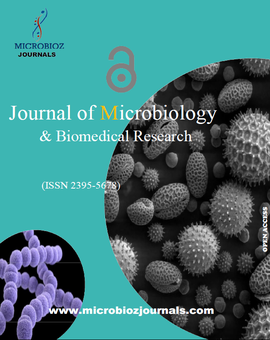
Abstract
Root rot of moth bean (Vigna aconitifolia (Jacq.) Marechal, caused by Macrophomina phaseolina is quite prevalent in the moth growing areas of Rajasthan and Uttar Pradesh state. The pathogen infects the moth plant at all ages and it results in a huge loss. The present study was undertaken to study the development of necrosis and occurrence of sclerotia and pycnidiospores in order to study the pathogenic variability of M. phaseolina.and to determine the morphological and pathogenic variability and their correlation with the age ofvigna plant. The isolates showed variation in mycelia growth and sporulation. Variability is the very basis of survival of the pathogen and It was observed that the sclerotia were produced in collar regions of 15,30,45 and 60 day old plants but symptoms were found to be more prevalent at maturity stage as compared to initial, seedling and flowering stages. Data reported here indicates that the sclerotia contribute to death of infected plants..It was observed that maximum disease incidence in plants occurs at maturity stage and susceptibility of plants to Macrophomina increased with age.
Key Words
Macrophomina phaseolina, root rot, moth bean, sclerotia.






Post Your Comment